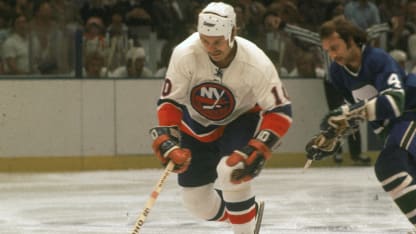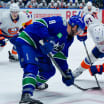An original Islander from 1972, the Grand Centre, Alberta left wing was the very last player chosen by the club in the 1972 Amateur Draft. From his earliest years, Howatt had to surmount several obstacles to reach The Show; among them size and sickness.
At 5-9, 170 pounds, Garry was nicknamed The Toy Tiger for his ferocious style despite being a Tiny Tim amid the NHL mastodons.
Then there was Howie's health issue: At age 14 he was discovered to be an epileptic. From his Junior hockey years on through his seasons with the Islanders, he had to take a strict regimen of pills to minimize the risks of further epileptic attacks.
Writing in his definitive history, "Players," author-historian Andrew Podnieks, noted that Garry was able to "Control things and had a tremendous impact with the Islanders."
In his first full season with the Isles, 1973-74, Howatt set a record of sorts: most penalty minutes without a misconduct -- 204 -- as he established himself as a fighter who would take on even the toughest heavyweights.
"He seldom came out on on the wrong end of a fight," wrote Podnieks.
RELATED: MORE MAVEN'S MEMORIES
Howatt scored clear-cut decisions over Dave "The Hammer" Schultz, Pat Quinn and Bob Kelly, six-footers all. More importantly, he beautifully blended with another tough Western Canadian, and future Islanders favorite, Bob Nystrom.
Arbour: "First, Nystrom made rapid progress, then Garry really caught up. In the beginning, guys didn't know who the hell this little guy was. It took a while but eventually everybody in the league knew him."
I vividly remember a perfectly clean breakaway goal scored by Garry against Montreal's Hall of Famer Ken Dryden. Looking more like today's Mathew Barzal, Howatt lured Dryden to the left and then crisply backhanded his shot into the upper right corner.
When, after the game, I commended the Toy Tiger for his impressive goal, he played down his excellence. "I'm not a star," he insisted. "I do everything average. But I love to work hard."
Fair enough, his exceptional vigor and vitality enabled him to be good enough to play on Stanley Cup-winners in 1980 and 1981 and to excel offensively and physically.
Every so often, a reporter would ask Garry why he didn't pick on someone his own size. His answer was simple: "There's nobody on the ice my size. There seldom is!"
























